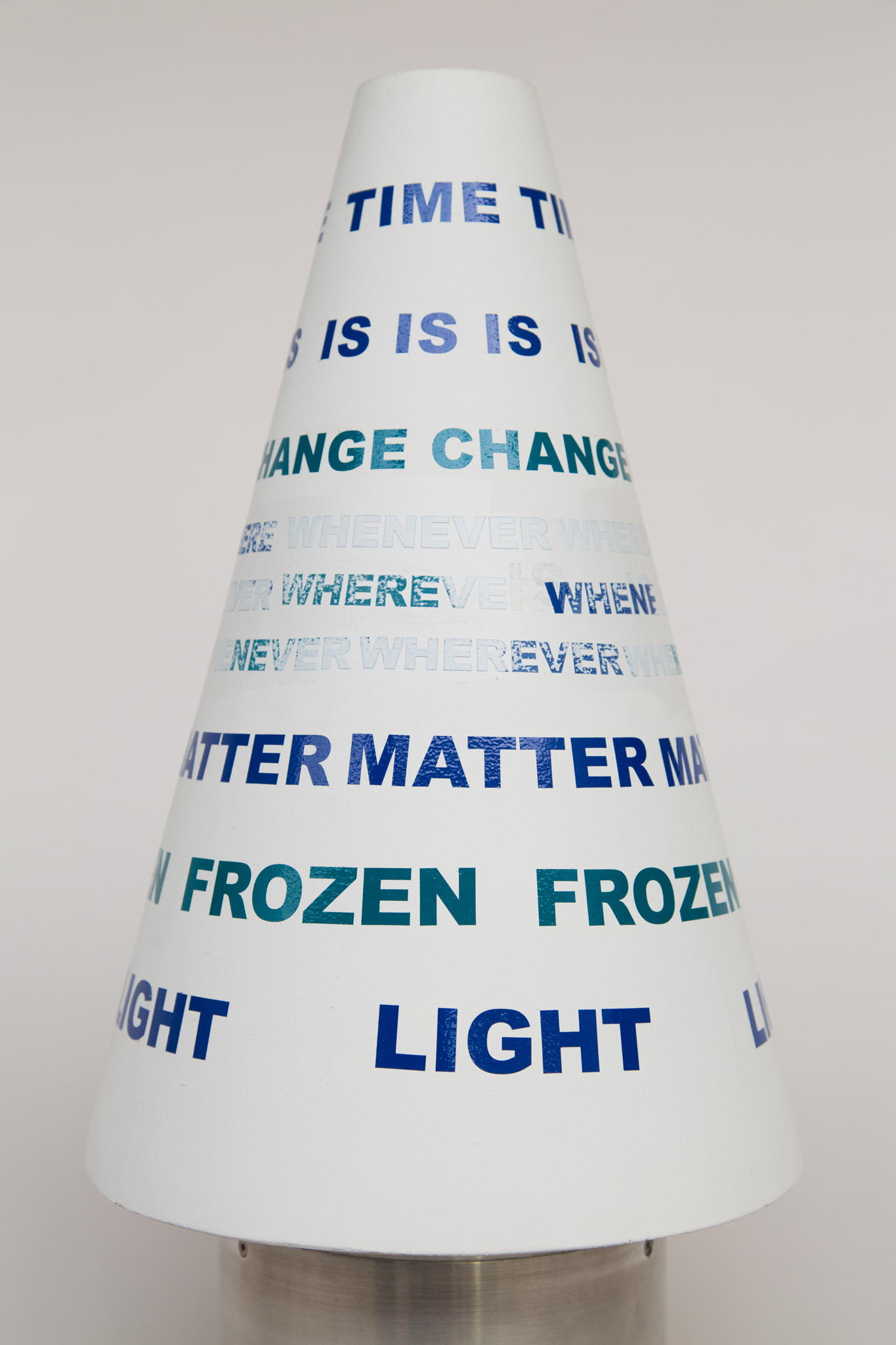Time is Change in Tate Britain Rehang
‘Time is Change 1964–5 consists of a white truncated cone affixed to a motorised turntable that is usually sunk into a plinth. When the work is activated, the cone rotates and appears to be floating above the plinth. It was made from one of a small number of cork cones that were found by Lijn’s partner, the sculptor Takis (born 1925), and given to her. The cone is inscribed with two-toned blue Letraset text written by Lijn. It reads: ‘TIME / IS / CHANGE/ WHENEVER WHEREVER / WHENEVER WHEREVER / WHENEVER WHEREVER / MATTER / FROZEN / LIGHT.’ When the cone rotates, the central bands of repeated words appear to mutate subliminally so that ‘whenever’ reads as ‘never’ and ‘wherever’ as ‘here’.
Time is Change was made in Paris before Lijn moved to London in 1966. The work is one of Lijn’s ‘poem machines’, a series of kinetic sculptures that had earlier formed the subject of her first solo exhibition held at the gallery of the Librairie Anglaise in Paris in 1963. The short texts on these cylinder drums and cones were written either by herself or taken from poems by friends – predominantly Nazli Nour, George Andrews and Leonard D Marshall – and were created in the ambience of the American literary avant-garde living in Paris in the early 1960s. The dematerialisation of language enacted by Lijn’s poem machines shared similarities with the cut-up texts of William Burroughs and Brion Gysin, who were familiar with Lijn’s work. Upon her move to London in 1966, with the invitation for a solo exhibition at Signals, Lijn’s poem machines positioned her at the forefront of early developments in the otherwise male-dominated field of kinetic art and concrete poetry in Britain. (Following the closure of the Signals gallery she showed instead in 1967 at Indica Gallery, where she exhibited a group of Liquid Reflections – see Tate T01828.) Lijn’s poem machines are activated by movement, their rotation dissolving the linearity of language. Yet they function as a spatial form of concrete poetry that is as much about destruction as a concretising of language in space. The artist has said, ‘When I made the Poem Machines, I wanted to renew the power of the word. I believed that words had been emptied of their meaning and only by dissolving them back into their primal vibration could they renew themselves.’ (Lijn 2002, p.79.)
In the late 1970s Lijn’s approach to sculpture markedly changed away from a quasi-scientific deployment of material as seen in Time is Change and towards a more emotional language that could also articulate a clear sense of feminist mythology and her own identity. Works such as Bridal Wound 1986–90 (Tate T15097) and Headborn 1987–90 (Tate T15096) exemplify this dynamic shift in her practice.’ Tate


